How many samples do you need to be “95% confident that at least 95%—or even 99%—of your product is good?
The answer depends on the type of response variable you are using, categorical or continuous. The type of response will dictate whether you 'll use:
- Attribute Sampling: Determine the sample size for a categorical response that classifies each unit as Good or Bad (or, perhaps, In-spec or Out-of-spec).
- Variables Sampling: Determine the sample size for a continuous measurement that follows a Normal distribution.
The attribute sampling approach is valid regardless of the underlying distribution of the data. The variables sampling approach has a strict normality assumption, but requires fewer samples.
In this blog post, I'll focus on the attribute approach.
Attribute Sampling
A simple formula gives you the sample size required to make a 95% confidence statement about the probability an item will be in-spec when your sample of size n has zero defects.
 , where the reliability is the probability of an in-spec item.
, where the reliability is the probability of an in-spec item.
For a reliability of 0.95 or 95%, 
For a reliability of 0.99 or 99%, 
Of course, if you don't feel like calculating this manually, you can use the Stat > Basic Statistics > 1 Proportion dialog box in Minitab to see the reliability levels for different sample sizes.
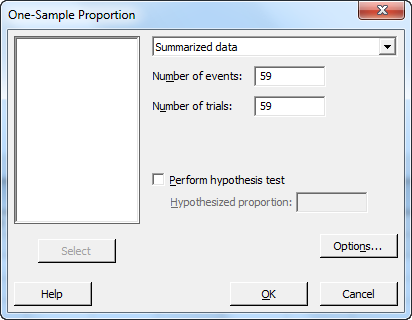

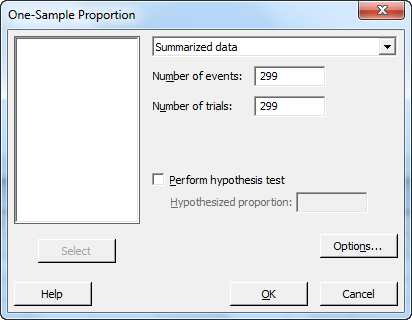

These two sampling plans are really just C=0 Acceptance Sampling plans with an infinite lot size. The same sample sizes can be generated using Stat > Quality Tools > Acceptance Sampling by Attributes by:
- Setting RQL at 5% for 95% reliability or 1% for 99% reliability.
- Setting the Consumer’s Risk (β) at 0.05, which results in a 95% confidence level.
- Setting AQL at an arbitrary value lower than the RQL, such as 0.1%.
- Setting Producer’s Risk (α) at an arbitrary high value, such as 0.5 (note, α must be less than 1-β to run).
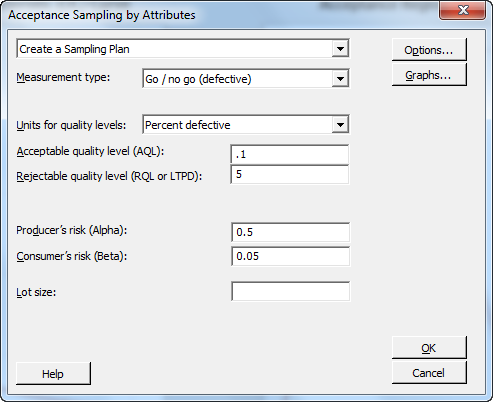
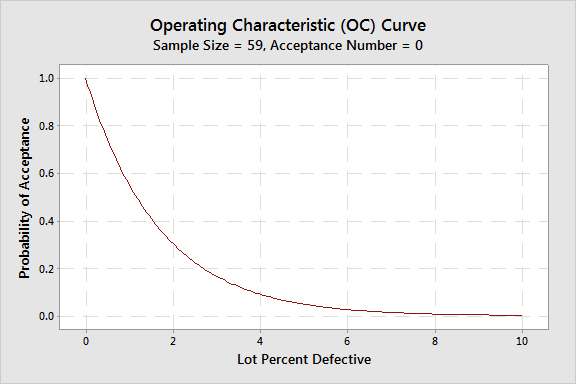
By changing RQL to 1%, the following C=0 plan can be obtained:
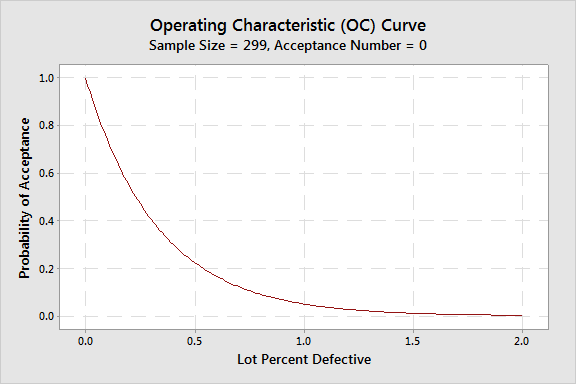
If you want to make the same confidence statements while allowing 1 or more defects in your sample, the sample size required will be larger. For example, allowing 1 defect in the sample will require a sample size of 93 for the 95% reliability statement. This is a C=1 sampling plan. It can be generated, in this case, by lowering the Producer’s risk to 0.05.
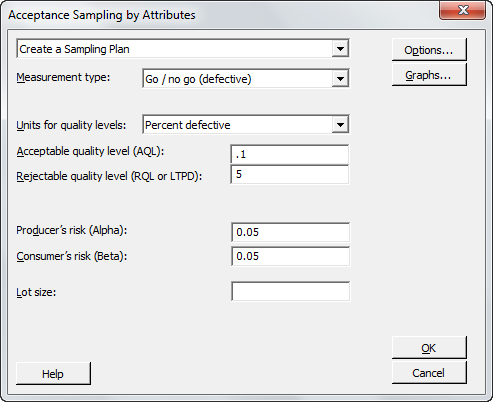
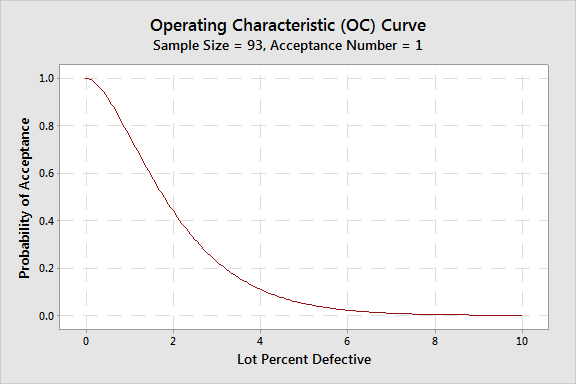
As you can see, the sample size for an acceptance number of 0 is much smaller—in this case, raising the acceptance number from 0 to 1 has raised the sample size from 59 to 93.
Check out this post for more information about acceptance sampling.



